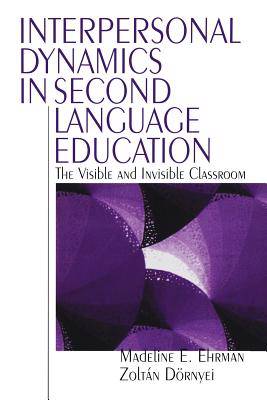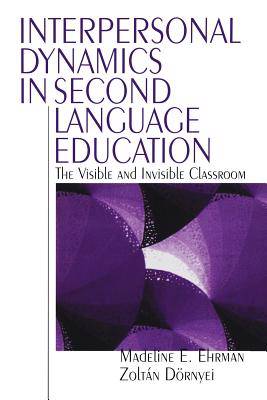
- Afhalen na 1 uur in een winkel met voorraad
- Gratis thuislevering in België vanaf € 30
- Ruim aanbod met 7 miljoen producten
- Afhalen na 1 uur in een winkel met voorraad
- Gratis thuislevering in België vanaf € 30
- Ruim aanbod met 7 miljoen producten
Zoeken
Interpersonal Dynamics in Second Language Education
The Visible and Invisible Classroom
Madeline Elizabeth Ehrman, Zoltan Dornyei, Madeline E Ehrman
Paperback | Engels
€ 238,45
+ 476 punten
Omschrijving
Until now, relatively little research on interpersonal processes and group dynamics addressed the educational domain, particularly second language education. This book fills the gap by synthesizing diverse aspects of interpersonal and group psychology and exploring conscious and unconscious processes that affect learning and teaching. Drawing on humanistic, social, and clinical psychology, it addresses unconscious communication among people, group development, class climate, psychological characteristics of effective classroom groups, leadership roles, interpersonal attraction and conflicts, and the relationship of these to learner autonomy and collaborative learning. The authors examine the contributions of the mental health branches of counseling and clinical psychology to our understanding of how teachers, learners and a variety of figures who many never enter the classroom interact with each other to make second language learning more or less effective. In particular, the authors show how the unconscious ôscriptsö can cause unproductive conflict demotivation and eventual aversion to language learning. Moreover, the text shows how learning can be facilitated by appropriate use of interpersonal dynamics. Due to its interdisciplinary nature, this book will be of interest to teacher educators and practicing teachers, researchers, undergraduate and graduate students, school administrators and supervisors of educational programs, and many learners themselves. In addition, since the main focus of the book is the affective foundation of the teaching/learning process, this material will be relevant to non-language teachers and clinical practitioners interested in educational issues, as well as graduate students in training for those professions.
Specificaties
Betrokkenen
- Auteur(s):
- Uitgeverij:
Inhoud
- Aantal bladzijden:
- 352
- Taal:
- Engels
Eigenschappen
- Productcode (EAN):
- 9780761907220
- Verschijningsdatum:
- 1/01/1998
- Uitvoering:
- Paperback
- Formaat:
- Trade paperback (VS)
- Afmetingen:
- 151 mm x 226 mm
- Gewicht:
- 553 g

Alleen bij Standaard Boekhandel
+ 476 punten op je klantenkaart van Standaard Boekhandel
Beoordelingen
We publiceren alleen reviews die voldoen aan de voorwaarden voor reviews. Bekijk onze voorwaarden voor reviews.








